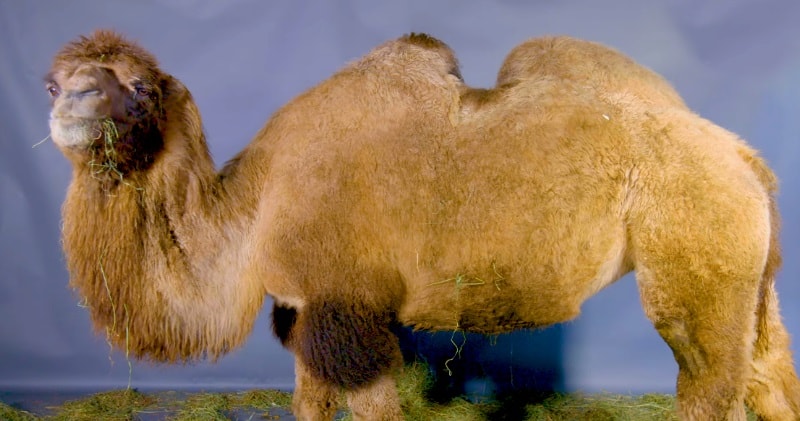Meet Gemma, a Bactrian camel at the Greater Vancouver Zoo. At nearly 8 feet tall, she’s a beaut. Bactrians are the largest of all living camel species. Native to central Asia, these guys are special for rocking two humps instead of one.
image/text credit: Great Big Story
Their woolen coats, tolerance for high altitudes and unique humps make them the perfect companions for long, arduous journeys. Unfortunately, due to hunting and habitat loss, the population of non-domesticated Bactrian camels continues to dwindle.
Bactrian camels have two humps on their backs where they store fat. Arabian camels, called dromedaries have only one hump, but both these types of camels use their stored fat as energy and water when they are far away from food and a freshwater source.
Advertisement
Bactrians’ nostrils close to block sand, and their bushy eyebrows and two rows of long eyelashes protect their eyes from blowing sand and ice. The only truly wild camels that still exist are Bactrian camels. These herds survive in the Gobi Desert of Mongolia and China, but number less than 400. They are critically endangered in the wild.











